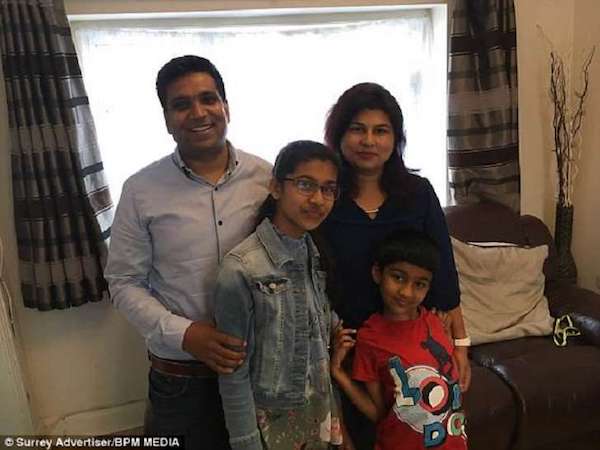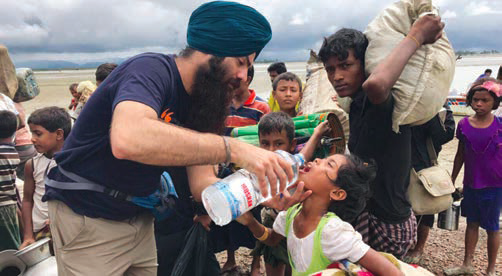
Lohri is a famous festival of North India, especially the folk festival of the Indian state of Punjab. There are many significance and legends about Lohri festival. It is believed that this festival marks the passing of winter solstice. Lohri festival is considered to mark the end of winter. It is a traditional welcome by people in the northern region of the Indian subcontinent for longer days and the sun’s journey to the northern hemisphere. The festival of Lohri is celebrated a day before the Hindu festival of Makar Sankranti. Lohri is a celebration of the arrival of longer days after the winter solstice. Usually the festival of Lohri is celebrated on 12, 13 or 14 January every year.
Significance of Lohri
For the people of Punjab, the festival of Lohri holds great significance as it marks the beginning of the harvest season of Rabi crops in the state and the end of winter. It is celebrated by making a huge bonfire that symbolises the Sun bringing in warmth. The significance of the festival is both as a winter crop season celebration and a remembrance of the Sun deity. Other legends explain the celebration as a folk reverence for fire or the goddess of Lohri.
Lohri puja
On the day of Lohri, place the picture of Mahadev on a piece of black cloth. An earthen lamp must be lit in front of the deity and people make several offerings and puja to the deity. People usually turn to the West during this puja. After doing puja to Sri Mahadev, people go around the bonfire made of wood and cow dung cakes — singing, dancing and throwing in food items like sugarcane, jaggery and other eatables they have got as part of the puja offering.
Lohri history and beliefs
As per the Punjabi folk tradition, Lohri’s original can be traced back to the time when a legendary Punjabi hero, Dulla Bhatti rescued innocent girls from the clutches of lecherous men. It is enshrined in folk poetry that is sung during the winter festival of Lohri. The chieftain is believed to have rescued two Brahmin girls, Sundri and Mundri, from Akbar, who wanted them in his harem. Dulla Bhatti became their godfather and is believed to have married them off on Lohri with much pomp and festivity, directly challenging the authority of the emperor. The tale of Sundri and Mundri was turned into a song that is sung during Lohri celebrations every year.
Lohri celebrations
Just like many other Indian festivals, Lohri is celebrated in its own unique way. The festival is celebrated by lighting up a bonfire. People dance and sing around it. They eat and also throw popcorn, gur, rewaries, sugar-candies and sesame seeds into the fire. In traditional Punjabi families, dinner is served with gajak, sarson da saag and makki di roti on the day of Lohri festival.
Lohri holds special significance for the newly-married couple or the new-born child in the family and is celebrated with great enthusiasm on these occasions as it symbolises fertility.
Punjabi farmers observe the day after Lohri (Maghi) as the beginning of the financial New Year. Happy Lohri is the conventional greeting on Lohri. Rather than go to each other’s homes to exchange sweets or mithai, like during Diwali, Lohri calls for everyone to meet at a common place. The community comes together and wishes each other a ‘Happy Lohri’ signifying the beginning of a new season. The word Lohri is derived from two words til (sesame) and rorhi (jaggery), which are traditionally eaten during the festival. The terms til and rorhi together used to sound like ’tilohri’ earlier in history, gradually morphing into the term ‘Lohri’. One the fire dies out, dinner includes crowd favorites like makki di roti te sarson da saag (cornflour pancakes and mustard spinach) and lassi (buttermilk).
Lohri celebrations mark the beginning of the harvest season. It is celebrated to offer thanks for making a bounteous harvest possible. Lohri night traditionally falls on the longest night of the year known as the winter solstice. Lohri festival indicates that the biting cold of the winter is ending and happy sunny days are arriving.
What do we do on Lohri?
Bonfire is the top highlight of Lohri. Traditionally, families used to gather around bonfires and sing folk songs like Sundariye Mundariye Ho. Nowadays, most people plug in a speaker to play songs off of YouTube or other music apps.Dishes made of rewri, gajak, peanuts and other seasonal products are snacks — as well as bonfire fodder.
What do you put on a Lohri fire?
People sing and dance around the Lohri fire and throw foods like gajak, popcorn, puffed rice and others into the fire as ‘tributes’ to the gods in exchange for blessings. Lohri is also considered especially auspicious for newlywed couples and parents with newborn babies.
Why do we burn fire on Lohri?
Folklore of Punjab believes that the flames of the bonfire lit on the day of Lohri carry the messages and prayers of the people to the sun god to bring warmth to the planet to help crops grow. In exchange, the sun god blesses the land and ends the days of gloom and cold. The next day is celebrated as Makar Sankranti. For some, the bonfire symbolically indicates that the bright days are ahead of the people’s lives and acts as the carrier of people’s prayers to the sun god — it’s just a really good excuse to party.
Importance of first Lohri of baby, bride
A new bride is made to never forget her first Lohri in her new family. She needs to wear new and vibrantly colored attire, dress up in her best for the occasion wearing lots of bangles, and decorate her palms with Mehndi. You can say that she needs to get ready as a bride again. The husband also wears a new outfit and wears an elaborate turban. The new bride is gifted with beautiful clothes and jewelry for the occasion by her in-laws and other friends and relatives. As an old custom- she is made to savor special delicacies and she enjoys to the full while knowing other significant traditions.
Traditionally, the Lohri holy Bash is commemorated to welcome the bride in a warm and friendly way among all the family members and to introduce the new bride to one and all.
Lohri is also very important for a newly born baby. The mother is dressed up in new and gorgeous clothes and heavy jewelry, and Mehndi is applied on her hands in an elaborate pattern. She is asked to sit with the newborn baby in her arms and family, relatives, and friends gift her with fruits, sweets, clothes, jewelry, and money. On this noteworthy occasion, a group of people also perform Bhangra on the traditional songs around the fire in the ground. They also offer roasted peanuts, sesame ladoo, and other food items in the fire for the jollifications. The revelry goes on for the whole night along with dinner and soft drinks. These days Lohri has gained immense popularity and people not only in Punjab, but the whole of India, even in south India get together to celebrate the festival.





Be the first to comment